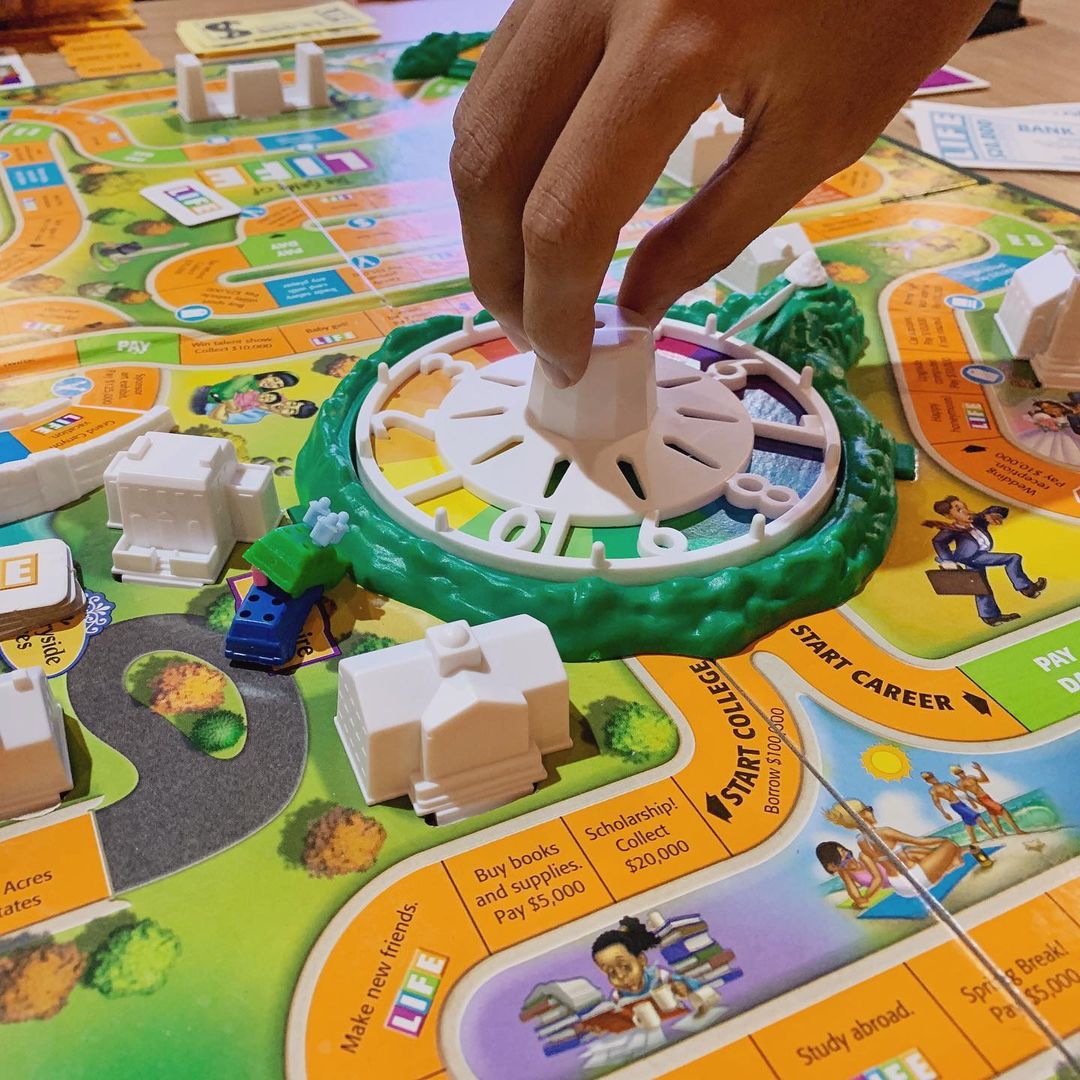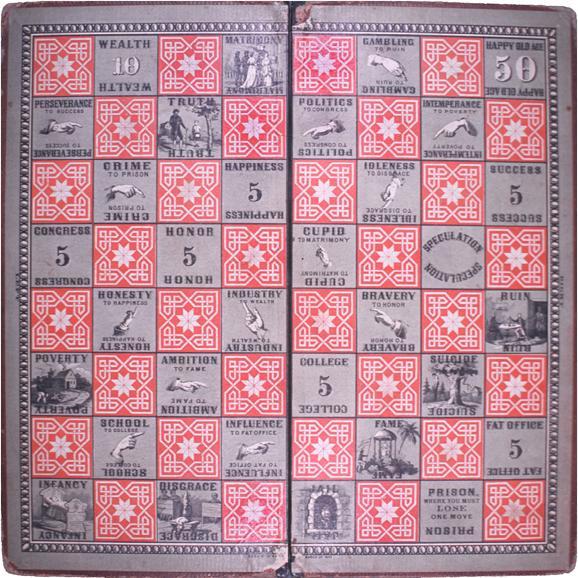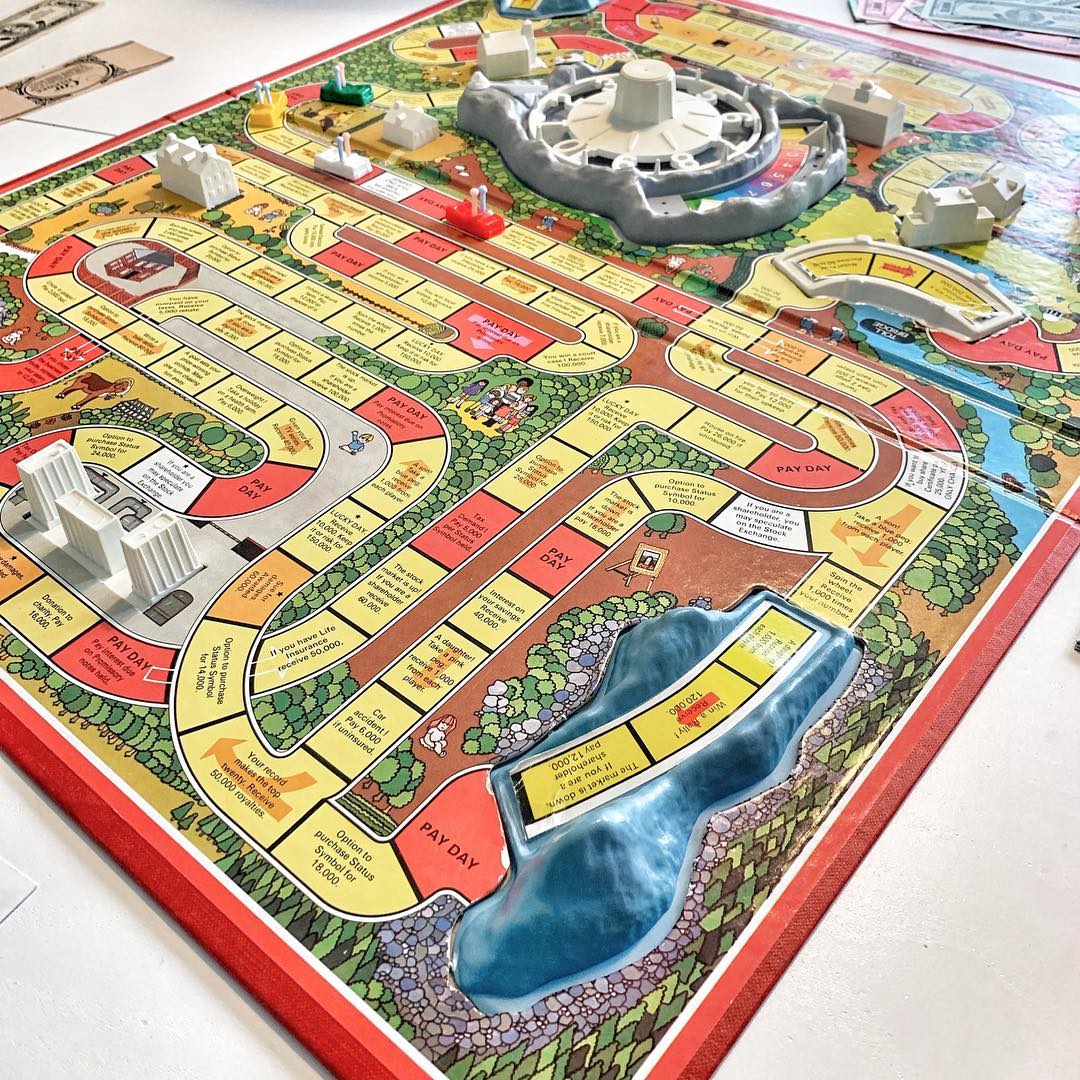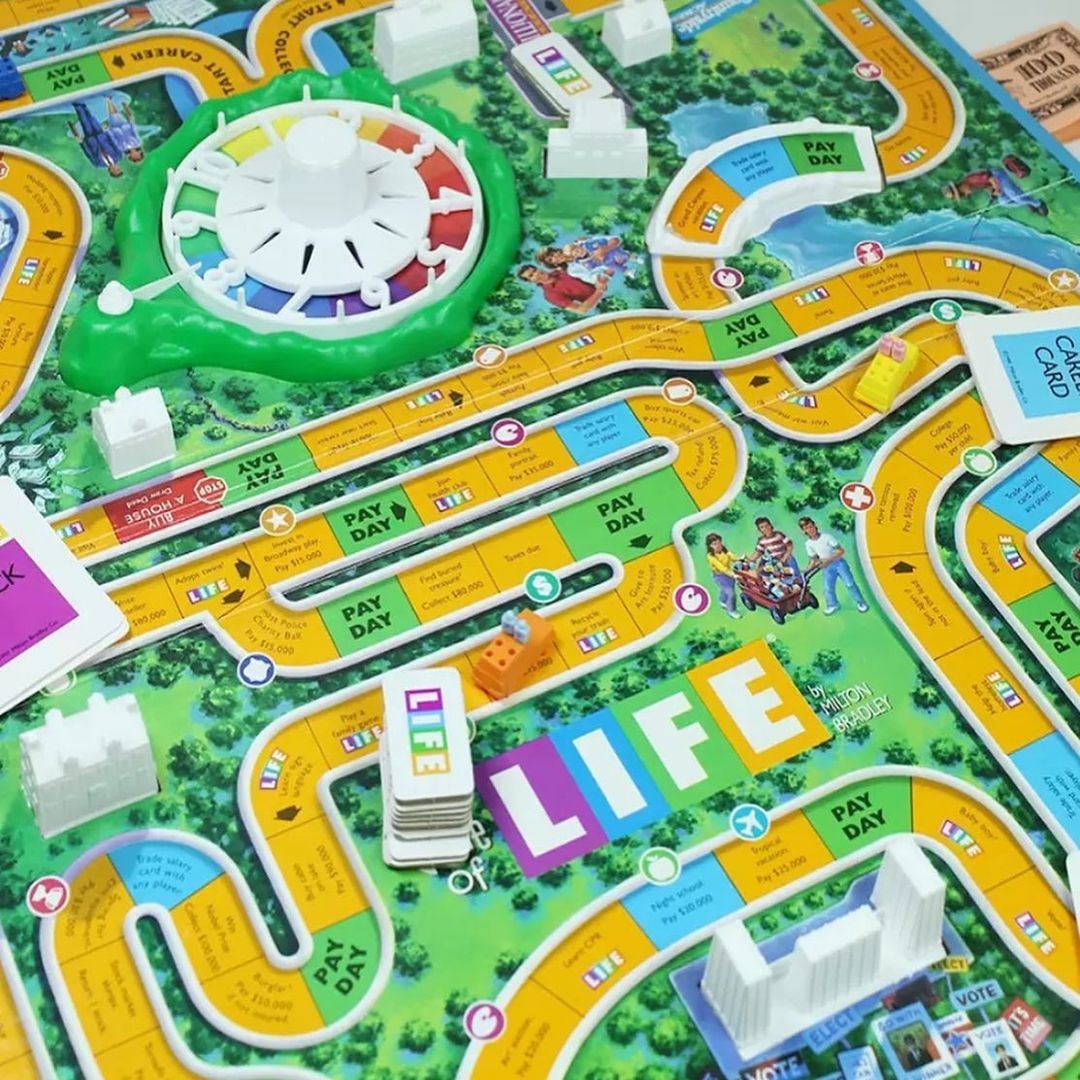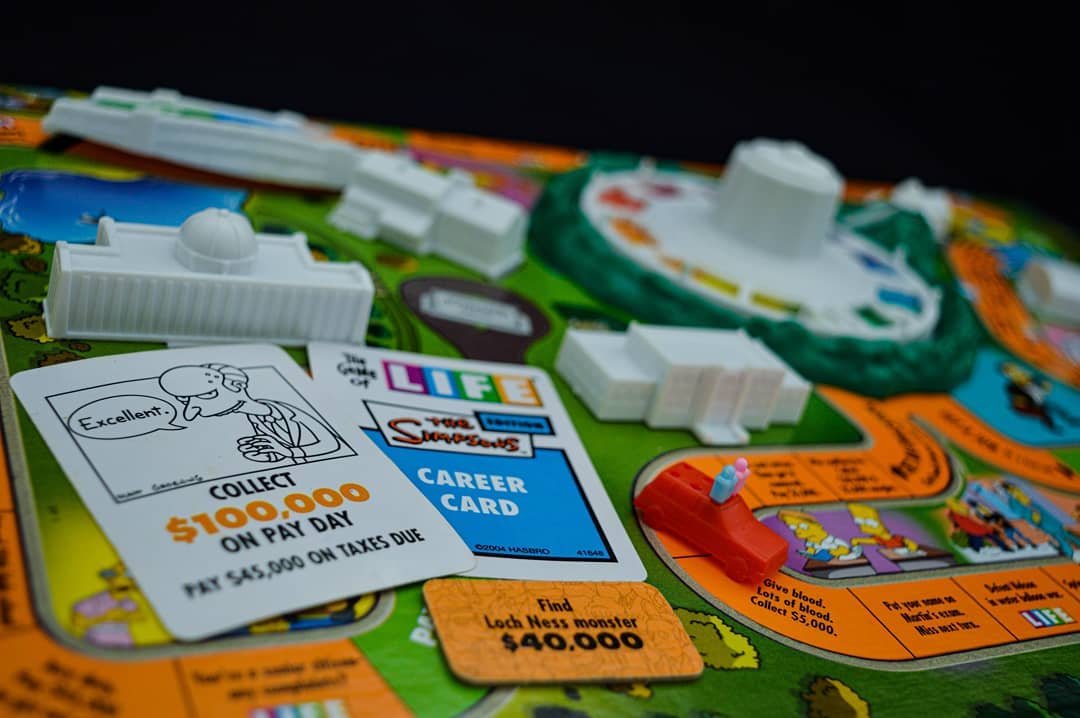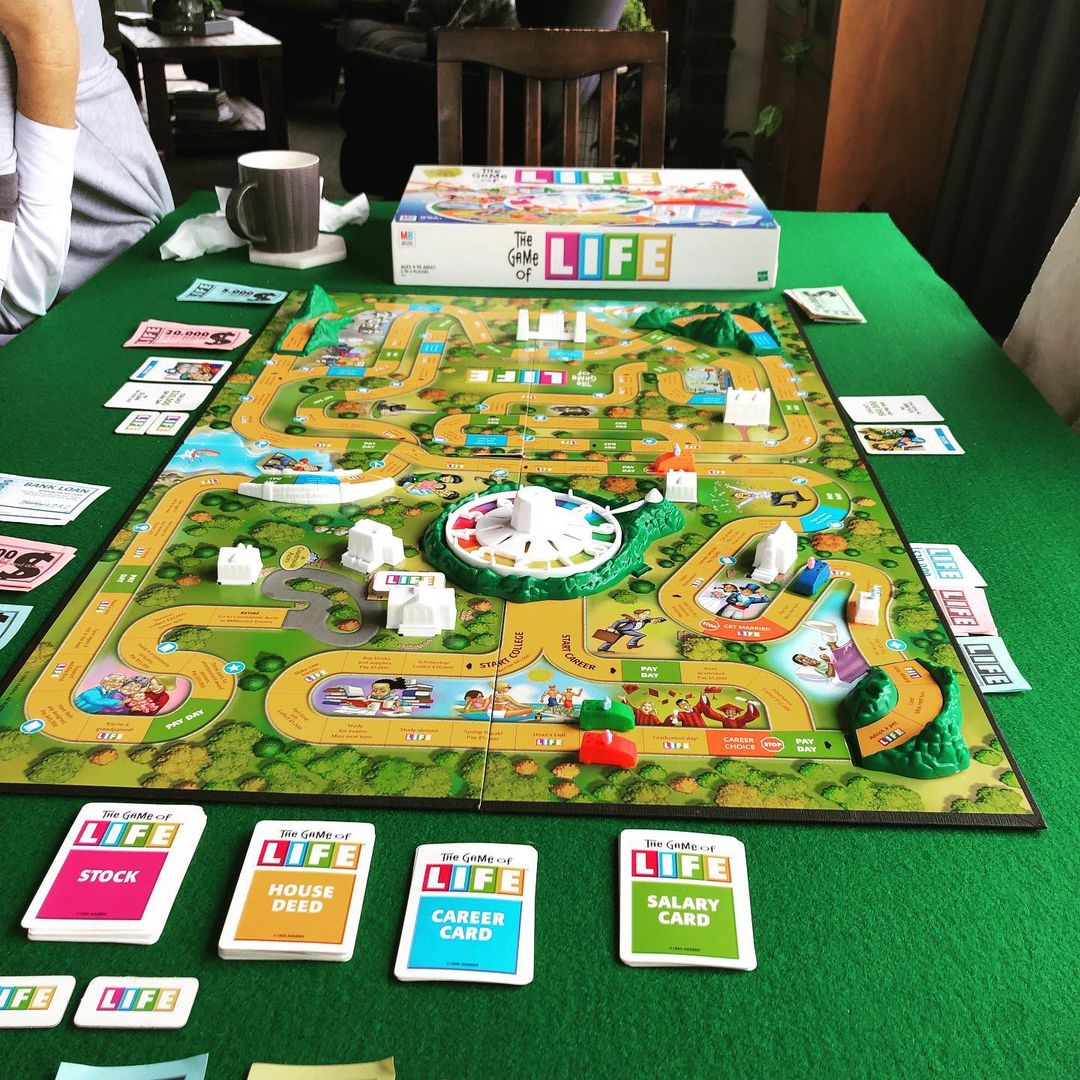The Game of Life is a tabletop game where players take turns traveling across the board to collect money, earn Life pieces, and reach the finish tile. It is often considered the first parlor game to become popular in the United States. Throughout the game, each character will have to deal with various problems drawn from real life, such as having to pay bills, find a partner, start a family, and acquire a job.
As they progress through these events, players will either gain or lose money and Life pieces, respectively; the player with the most money and Life pieces at the game’s conclusion wins. Although the Game of Life seems straightforward at first glance, the game’s many rules and subtle nuances can make it feel much more complex than it actually is. If you do not yet know how to play this board game, this gameplay guide will help you learn the game. But let’s look at the origins of how “Game of Life” literally came to life.
The Checkered Game of Life
Checkered Game of Life, created by Milton Bradley in 1860, was the first iteration of the Life board game. Bradley was an entrepreneur who utilized his lithography machine to produce and sell likenesses of notable figures like Abraham Lincoln. Bradley offered hundreds of reproductions of his beardless image of Abraham Lincoln for sale. Poor sales nearly put Bradley out of business when Lincoln grew out his notorious beard, and nobody wanted to buy photographs of Lincoln without his most recent look.
It was also at this time that Bradley came up with a board game that would go on to become a smash hit in America. The Checkered Game of Life is a board game whose goal is to get points by moving from one real-life circumstance to the next. You also earn points on “good” tiles depicting positive words like “honor,” “bravery,” and “success.” All players must arrive at the last location called “Happy Old Age.” The player who amassed the most points is the winner.
How Bradley Came Up With the Idea
Bradley drew inspiration for the game from his own personal ups and downs. During this introspection, he also concluded that happiness in old age can only be achieved by achieving the other two aims of life: enduring hardship and being grateful for good fortune.
Even though the updated Game of Life has its original moral lesson, it also includes the message that you need to be rich to be happy. This contradicts Bradley’s views on the subject, where he did not believe happiness could be bought with money.
The Birth of the Modern “Game of Life”
In 1960, Bill Markham and Reuben Kramer came up with the idea for the present version of the Game of Life. The game pieces are now vehicles, and the tiles can be used to make tracks. To get anywhere, the car has to move along the track. The number on the spinner within the box determines how far it goes.
Additionally, the tiles depict various life events. These include getting married and having children, with the extra family members represented by tiny pegs that may be fitted in the holes of the vehicle game piece. Physical bills from $5,000 to $100,000 serve as play money in the board game. The game’s insurance cards, stock certificates, and action cards add a layer of strategy to the gameplay, including the bills themselves.
The Gameplay of “Game of Life”
We’ll be utilizing the Electronic Banking version, which does away with cash in favor of more practical debit cards, to walk you through the game’s mechanics. The electronic banking system is where players can enter the amounts of money they will be required to pay or earn due to certain events or activities in the game.
Starting the Game
The board should be placed on a stable surface to start a game. This prevents the game pieces from getting knocked around. After that, you must position the spinner in the appropriate board quadrant. All players select a game piece and a matching peg and then utilize the spinner. The player with the highest spinner number goes first, followed by the next highest number, and so on. Each player must deposit $10,000 before the start of the game.
The first player to utilize the spinner will decide between two possible routes for their game piece: the Career Path and the College Path.
Choosing the Career Path
If the player goes along the Career Path, they will have a career based on the occupation depicted on the drawn card. When a player reaches the Pay Day tile, the game ends. The player receives the income indicated on the Salary Card that was pulled after the Career Card was drawn.
Choosing the College Path
Suppose the player chooses to follow the College Path. In that case, they will have to explore several tiles before being allowed to select a profession. No matter what the spinner says, the player’s turn must end on the red tile of the Career Path. Next, the player will select a career by drawing choosing from the three drawn cards from the Career Cards deck. Then, they will select one of the salaries listed on three of the drawn Salary Cards.
The Action Cards
Each player will spin the spinner to move toward the finish line. However, there are numerous tiles on the board where players must pick an action card to determine what to do with their cash. For instance, a player’s turn ends if they pay the cost listed on an action card. While certain action cards may award you money, the vast majority will most likely cost you cash.
The Stop Tiles
In addition to the Pay Day tiles, the Stop tiles will cause you to stop moving your piece on the board. The most critical decisions for your game piece, such as getting married, buying a house, and starting a family, will be presented to you in these Stop tiles. If you roll a “buy a house” tile and don’t have the cash to make the purchase, you’ll need to apply for a loan from the game’s bank.
Ending the Game
When a player’s piece lands on the last tile, all outstanding debts from previous turns must be repaid. After that, they must sit tight until all the other players have paid off their loans at the last tile. The winner of Game of Life is the player who earned the most money during the round.
In order to win, you must know how to play the game, but you can’t do that unless you know the rules. It’s crucial that you study the game’s rules thoroughly and understand precisely what you need to do in every possible situation on the board. The Game of Life has taught valuable lessons to its players, particularly children who play it with their parents, while also being fun. The game’s morals include teaching the essence of perseverance in the face of setbacks and the desire to live long enough to enjoy the rewards of one’s efforts.
